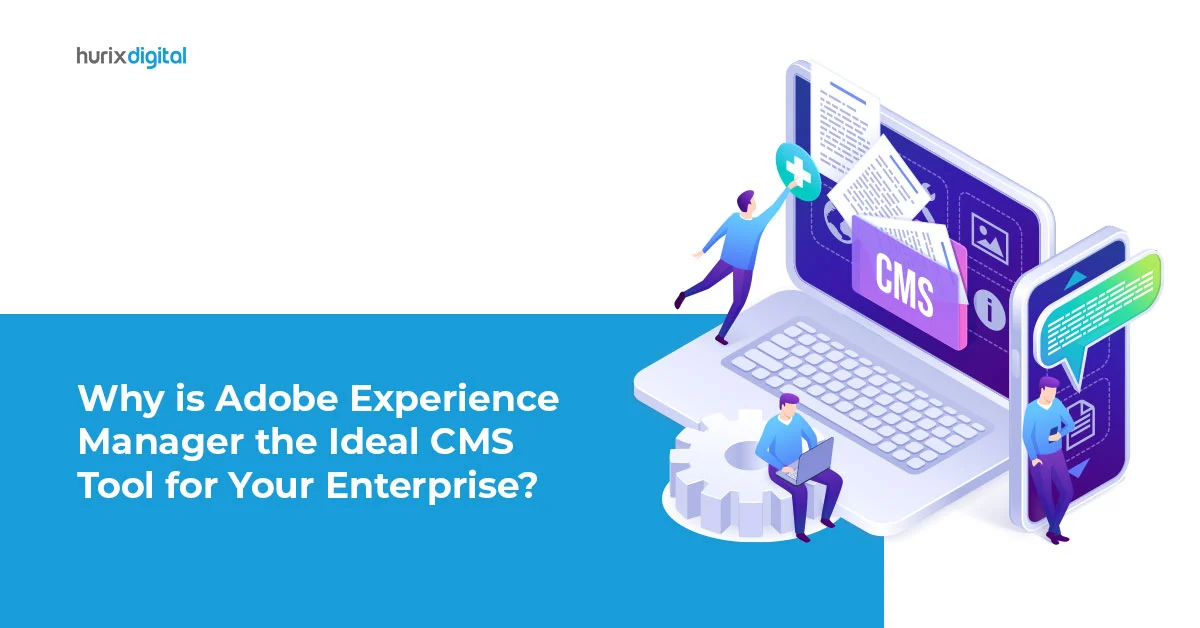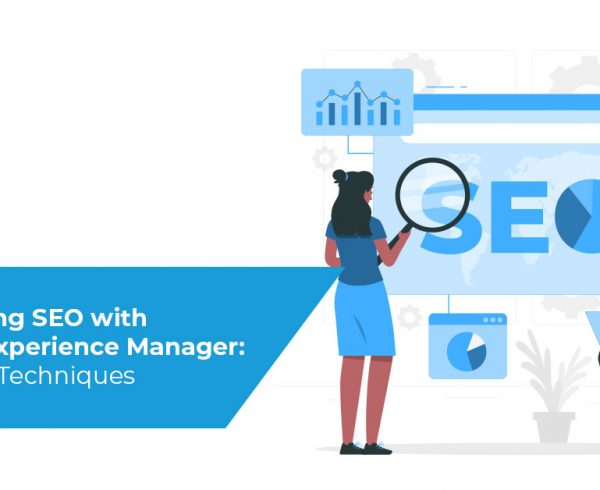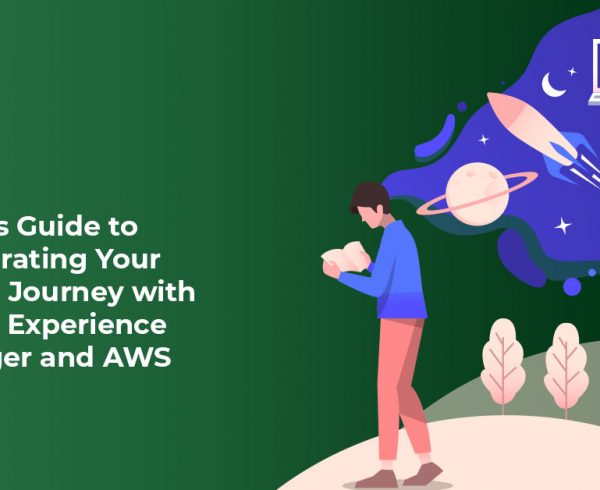Summary
The blog post discusses the key features and capabilities of Adobe Experience Manager (AEM). The post showcases how AEM empowers organizations to create engaging digital experiences and optimize content delivery across various platforms, fostering customer engagement and business growth.
Personalization is a requisite for success in this hyper-competitive world. 80% of customers are more inclined to purchase from companies/brands that offer personalized experiences. Brands with personalized services increase customer loyalty by 1.5 times more effectively than brands with poor personalization services.
Online shopping is increasing daily, with 16.4% of retail purchases slated to occur online in 2023. It’s clear that if you want to succeed and stay ahead of your competition, providing personalized digital customer experiences is paramount.
Now, the only question is how you can do so – and the answer lies in AEM Adobe Experience Manager.
Table of Contents:
What is Adobe Experience Manager?
Adobe Experience Manager Platform, an offering of Adobe Experience Cloud, is a content management system. It enables companies to create, manage, and deliver personalized digital experiences across numerous channels.
Key Features and Capabilities of AEM
AEM has a host of features and capabilities which can make your business touch new heights of success digitally. So, let’s dive into each one at a time.
1. Content Authoring
Create and manage content with the help of content authoring components like:
- Content Fragments: Without being restricted by layout designs for the whole website, you can use content fragments for inserting content and media into page-independent structured models.
- In-context Editing: Driven by the WYSIWYG (what-you-see-is-what-you-get) interface, you curate, edit, and update pages for blogs, articles, carousels, forms, and more.
- Style and Design: Without needing help from the back end, you can standardize the designs for pages’ fonts, colors, and formats by simply choosing from a list of predefined styles.
- Auto-Text Summarization: Adobe Sensei’s NLP technology summarizes text used in your content in multiple languages so you can reuse it across different channels.
- Out-Of-The-Box Components: Create responsive web pages quickly with the help of flexible, backward-compatible components like page navigation, breadcrumbs, search, forms, and more.
2. Digital Asset Management
Digital Asset Management (DAM) is a repository for all your digital assets. With this feature, build a centralized workspace that allows your teams to collaborate more easily with each other, enabling them to –
- Share, manage, and store content, images, videos, audio, and other digital assets
- Use search, smart tags, and metadata to find assets quickly
- View, edit, and configure smart tags and metadata for assets based on analysis of customer website visits
- Edit, transform, and auto-tag images and videos with Photoshop and Indesign so that they stand out on social media
- Use version control to make sure that assets are always up to date
Also Read: How AEM is Changing the Game for Media and Entertainment Companies
3. Multi-Site Management
If your business has a global presence or wants to develop one, having multi-site management in place is a good starting point. Use this feature to create and control all your sites from a single, user-friendly platform. With the help of multi-site management, stay relevant in today’s competitive world and reap benefits such as:
- Region-specific localization of mobile-friendly sites
- Reduction in duplication of efforts due to easy recycling of content
- Improvement in the consistency of the design and branding
- Establishment of a consistent brand identity across countries
4. AEM Intelligence
Replace boring, time-consuming tasks with automated workflows with the AEM Adobe Experience Manager AI tool. Besides this, tailor experiences to meet the needs of your customers with the help of Adobe Analytics components like:
- Detailed Asset Insights: Look at the data insights contained in the centralized reporting system and analyze the performance of your digital assets. Based on the analysis, improve your performance by attaching SEO-relevant and popular meta-titles and tags to products and services.
- Content Insights: Study the reports on unique visitors, total page views, and other data from the web analytics reports. Analyze them to understand your current performance on every page and make better SEO-relevant content decisions for the future.
- Targeting Insights: Access the reports on conversion rate, audience engagement, average order value, etc., to understand and brush up on the performance of your digital marketing efforts.
- Real-time Customer Profile: With this profile, you can get to know your customers’ attributes and behaviors and use them to deliver highly-personalized experiences.
5. E-Commerce Integration
With changing times, the needs and demands of shoppers also changed. With a switch to online shopping taking place, it’s more important than ever to provide customized shopping experiences across numerous channels, including websites, mobile apps, social media, etc.
With AEM’s e-commerce API framework, you can do exactly that and so much more, such as:
- Pair up with commerce data integrations, campaign dashboards, marketing tools, and other related tools to create a cohesive digital system for marketing campaign management.
- Join forces with third-party commerce and fulfillment platforms to create a consistent and engaging shopping experience for your customers.
Integration with Adobe assets and third-party platforms helps you significantly reduce production time, increase customer favorability, enhance brand recognition, and maximize ROI.
6. AEM Forms and Cloud Services
Create forms for important purposes, including discount coupons, payment options, registration, etc., with AEM Adobe Experience Manager Forms. In addition, choose templates for forms and use automated form conversion to auto-convert conventional input fields and old PDF forms to digital, adaptive, and mobile-responsive forms.
With Adobe Cloud services, enjoy having the three essential functions, as follows:
- Security: Strong protection and encryption of your customers’ data from unauthorized sources.
- Scalability: A high level of scalability about content and traffic; this feature auto-scales to accommodate your company’s needs.
- Up-to-date services: Whenever a new update or version comes up, this feature auto-updates to provide access to the latest cloud services.
Also Read: The Benefits of Using AEM as a Cloud Service for Authentication
The End Note
By now, you know how integral Adobe Experience Manager Platform is for businesses. With the e-commerce market projected to reach over $8.1 trillion by 2026, it’s high time to invest in Adobe Enterprise Manager for the successful functioning of your business.
Since setting up new technologies can feel overwhelming, outsourcing experience management services from companies like Hurix Digital can help save time and cost.
Hurix Digital provides customized AEM solutions based on the specific needs of businesses. With features like content authoring, DAM, omnichannel delivery, workflow automation, and more, Hurix Digital can help you deliver personalized customer experiences and maximize your ROI.
As a firm believer in creating compelling and engaging digital content, Hurix Digital is the trusted partner of companies like Flipkart, Maersk, Blue Yonder, and more.
To know more about AEM solutions, get in touch with Hurix Digital.









